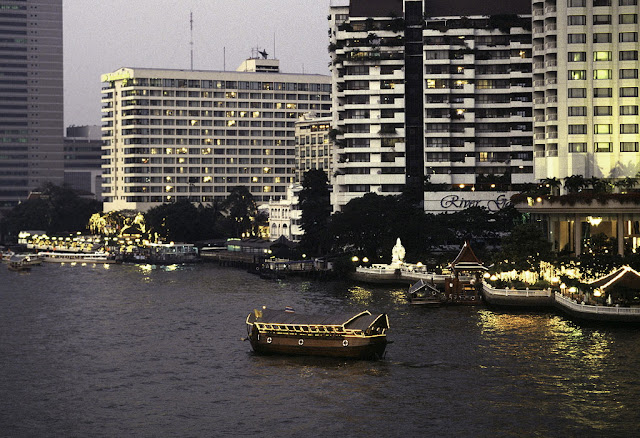A Land of Many Faces
The Kingdom of Thailand is perhaps, diverse and eclectic as any country and culture one can visit. The contrasts are, at times, stark and disturbing.
So what are the contrasts?
First, the stunning beauty of Thailand's mountains, the fertile expanse of the Chou Phraya flood plain, the seascapes and vistas of the Gulf of Siam and Andaman Sea Coast.
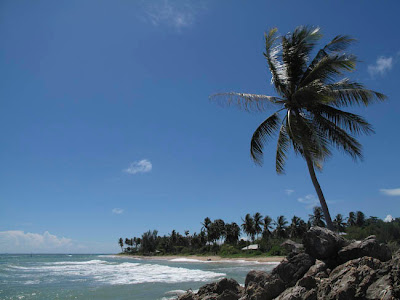 | |
| Andaman Sea Coast - koh Lanta yai |
 | |
| Issan Region - Foothills of the Himalaya |
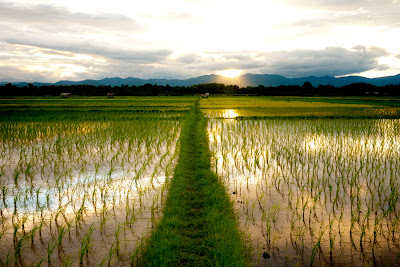 | |
| Rice bowl of the world - Chao Phraya Floodplain |
Second, the abundant and truly amazing archeological sites of antiquity interspersed among the glittering achievements of contemporary architecture.
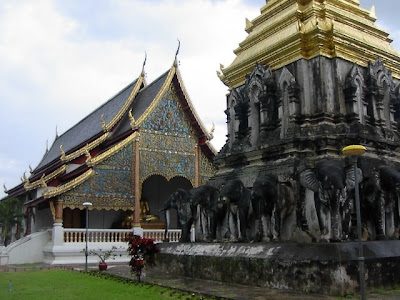 | |||
| Ancient and Middle - Kingdom Temple Restorations |
 | |
| Archeological Restoration - Ayutthaya Kingdom (1351 to 1767) |
 | |
| Bangkok Skyline |
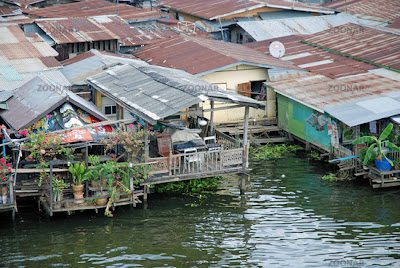 |
| Chao Phraya Slum - A too common Bangkok scene |
 | |||
| The Labor Pool - Exploited and forgotten |
 | ||
| Across the Chao Phraya River - A different neighborhood |
And last (and most disturbing) the abundance of violence and crime perpetrated by foreign sources as well as the famously corrupt police and political machines that attempt to guide Thailand through its continuing experiment with a Constitutional Democracy.
Thailand is learning that freedom sometimes comes at a steep price, and, there is no substitute for education and the rule of law.
This story recently appeared in the Bangkok Post English Edition of the daily newspaper:
"A crime-fighting centre to crack down on local
and foreign mafias on Phuket island will open next week, Justice
Minister Chaikasem Nitisiri said on Thursday.
The mafia-busting centre will be officially launched on Aug 9 at
Phuket international airport and another location in the city centre
with officials from the Department of Special Investigation (DSI),
Phuket police and officials, tourism officials and tourism police.
The four agencies will target Thai gangs threatening tourists
visiting the resort island including those at the airport and 15 foreign
gangs run by Russian, Chinese, Koreans and other nationals on the watch
list of the DSI and Tourism and Sports Ministry.
They operate at the airport, hotels and some beaches including Patong, Kata and Karon.
Pattaya, another tourism magnet, will be another location for the
establishment of a mafia-fighting centre, the DSI said in a press
release.
The plan followed a trip to Phuket by Somsak Pureesrisak and DSI
chief Tarit Pengdith on July 25 to identify problems with Phuket
authorities after complaints by foreign visitors travelling to the
southern province.
It also came after the European Union and its ambassadors issued a
tough statement in June demanding Thailand to get serious about cracking
down on problems faced by tourists from Europe visiting Phuket. The
bloc has threatened to issue a public warning to tourists if Thailand
failed to tackle scams including those involving taxis from the airport,
tuk-tuks, jet-ski rental scams..."
Modern Slavery and Human Trafficking
The Problem
Despite being one of the wealthiest countries in its region, Thailand
has the highest estimated prevalence of modern slavery in the
South-East Asia area. It is considered a hub of exploitation within the
Greater Mekong sub-region, with victims of slavery originating from both
within and outside Thailand’s borders. Modern slavery affects some men,
women and children from within Thailand, however victims are largely
migrant workers from surrounding countries.
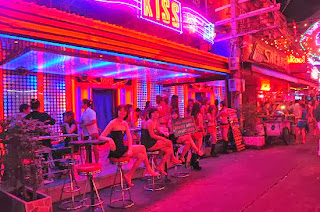 | |
| Bangkok's infamous "sexploitation" District, soi Cowboy |
Human trafficking is a significant problem in Thailand, with people
trafficked out of Thailand to countries like China, Germany, Israel,
Japan, South Africa and the USA. Thai women are particularly vulnerable
to trafficking into the forced domestic and sex industries in countries
all over the world, lured by seemingly genuine job offers, but often
exploited via debt bondage. Alternatively, victims originating from Cambodia, Myanmar, PDR Lao and Vietnam are also subject to slavery within Thailand.
Thailand’s recent growing economic prosperity, and extremely low
levels of unemployment (the fourth lowest worldwide with a rate of only
0.7% unemployment) has resulted in a labor shortage to be filled by migrants. Unemployment is low because there are no entitlements, no social 'safety nets' like Unemployment Insurance or food stamps. You find work or you perish...and the financial elite take advantage of the people's needs.
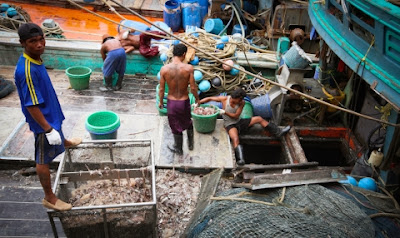 | |
| Thailand's fishing industry ruthlessly exploits immigrants |
Notable Aspects of the Problem
Thailand is one of the world’s leading seafood suppliers producing
4.2 million tonnes of seafood per year, 90% of which is exported. The
industry has seen an explosive growth in recent years due to increased
demand from the international market (mainly Europe and the U.S.) which
has led to an increased need for, and subsequent use of cheap migrant labor. It
is estimated that approximately 5-6% of migrant workers, or roughly
200,000 migrants are working within the Thai fishing industry.
There
are, however, limitations in the regulation of the industry due to
insufficient resources and legislative framework, and inadequate
delineation of territorial jurisdictions; as a result the industry has
been implicated in the abuse of workers, particularly forced labor and
trafficking.
Many fishers find themselves in situations of debt bondage due
to costs occurred during transfer and placement with employers. Given
that boats are often in the deep sea for lengthy periods of time, the
ability to escape poor working conditions is significantly harder. Reports suggest that in addition to extensive working hours, poor and often withheld pay, there is a high level of violence experienced by migrant workers on fishing vessels. Of 49 Cambodian fishers surveyed by UNIAP SIREN, 59% had witnessed a murder by the boat captain.
 |
| Exploitation of child labor-a high cost to pay for shrimp |
Child exploitation and modern slavery is a significant problem, with high numbers of children exploited both within and outside Thai borders. Reports suggest that children from minority groups, including migrants, stateless persons – such as some of Thailand’s ethnic minorities who are denied citizenship - and hill tribes from both northern and southern Thailand are particularly vulnerable.
While the Special Rapporteur of Trafficking in Persons, especially women and children, recognized that there had been a reduction in the number of child sexual exploitation cases among Thai children, it is a still a significant risk for children from Cambodia, Laos and Myanmar who are trafficked into Thailand. Of known cases, many of these children are enslaved for sexual exploitation, including child prostitution and pornography. Thai girls, often aged between 12 and 16 years from the hill tribes of northern Thailand are subjected to commercial sexual exploitation under ‘prison-like’ conditions. The majority of these known victims, however, come from outside Thailand, with the highest number coming from Myanmar.
A high level of corruption within the Thai law enforcement personnel
has meant that human trafficking processes go unchecked, and modern
slavery prevails. Members of the police force protect establishments
such as commercial sex venues, factories, and seafood processing venues
from raids and inspections. Police have also been found to conspire with
traffickers, harbour, transport, and sell victims directly, interfere
with investigations, extort money at the border, and engage in sexual
activities with trafficked women or children.
In Samut Sakhon, for example, reports exist of both factories and
illegal migrant workers paying the police a form of protection money to
avoid being arrested.
What Is The Government Doing About It?
Treaties and Conventions
The Royal Thai Government has ratified some of the key international
treaties relating to modern slavery, including the Convention Concerning
the Prohibition and Immediate Action for the Elimination of the Worst
Forms of Child Labor and other relevant ILO Conventions. Thailand
is signatory to the 2000 UN TIP Protocol, but has not yet ratified it,
preferring to institute domestic measures aimed at the prevention and
elimination of human trafficking prior to its ratification. In 2000 the
government signed the United Nations Convention against Transnational
Organized Crime.
The Royal Thai Government has made a significant effort to consult and coordinate with regional partners. Thailand is a founding member of
the ASEAN (Association of Southeast Asian Nations)
and participates in the Bali Process forum – an inter-governmental and
inter-agency mechanism aiming to raise regional awareness with regards
to people smuggling and human trafficking.
 | |
| Cambodian and Thai officials meet to discuss human trafficking interdiction programs (Photo Credit unavailable) |
There have also been efforts to increase support for victims. There is a government-run hotline (1300) for all issues of social welfare, where victims can access assistance, however, low numbers of migrants make use of this facility as the operators predominately only speak Thai.
There are a number of government and NGO shelters for victims of trafficking, as well as a repatriation program to assist victims to return home. In 2012, the Government reported that 271 victims were provided with assistance at government shelters, which is a decrease in numbers from previous years. While shelters provide important support options for victims, concerns have been raised about the practices of ‘routine-detention’ of victims under the premise of supporting and protecting victims.
Notable Aspects of the Response
The Royal Thai Government was placed on the Tier 2 Watch List by the
U.S Department of State, and avoided being downgraded to Tier 3 as a
result of the government plan to combat human trafficking. The plan, if
implemented, would meet the requirements of the Department of State by making significant efforts to meet the minimum standards for the
elimination of trafficking..The
Ministry for Labor has set up a committee, including contributions
from fishing trawler operators to tackle issues of human trafficking in
an effort to remove Thailand from the US State Department TIP report’s
watch list.
Following
the development of the National Action Plan, the Thai Government met
with non-government agencies to discuss ways to enhance cooperation
between the relevant actors in the field of anti-human trafficking, and
served to display the government’s commitment to tackling the issue.
Results of the implementation of this plan remain to be assessed.
Despite the government encouraging migrant workers to be registered,
it is estimated that more than one million migrant workers are not registered, leaving them
vulnerable to exploitation and slavery. In 2006, Thailand began a
process that requires low-skilled migrants to have their nationality
verified by their country of origin before they are eligible to obtain a
work permit. However, there are significant operational problems
causing lapses in registration. Migrant workers who are registered face
limitations on their movements as they are not allowed to leave the area
where they have registered.
Given the high number of migrant workers entering Thailand, the
protection of these workers, both registered and unregistered, is
central to addressing the issue of slavery and related exploitation in
Thailand. In 2007, Thailand signed the ASEAN Declaration on the
Protection and Promotion of the Rights of Migrant Workers, and became a
member of the United Nations Human Rights Council in 2010.
Irregular
migration is criminalized in domestic law and illegal migrants are
subject to high penalties and deportation. Coupled with inadequate
screening and identification of victims within these groups, means that
those who are enslaved are also vulnerable to arrest and deportation. A
UN Sentinel Surveillance report, for example, gives a prevalence
estimate of over 20,000 Cambodian victims mis-identified within a
population of around 90,000 Cambodians arrested and deported under the
immigration law.
This
fact is also often manipulated by unscrupulous employers to keep
control of their workers by threatening to report them. Many workers in
conditions of forced labor and severe exploitation fear being deported
more than continuing to work in the inhumane conditions they face.
Conclusion
The total number of individuals estimated to be enslaved in Thailand is 450-500,000 and ranks 24th on the Walk Free Foundation's Index, behind countries such as India, China, Bangladesh, Russia and others.
It has been suggested by international agencies that Thailand should:
- Ensure government data is collected and shared so anti-trafficking efforts can be measured and assessed.
- Increase the number of labor inspectors and investigate claims of corruption.
- Support existing hotlines that provide multi-lingual support to victims.
- Extend training beyond law enforcement to immigration officials, labour inspectors, as well as front-line professionals in recognising and responding appropriately to the signs of human trafficking and slavery.
- Take proactive measures to investigate and prosecute government officials suspected of trafficking-related corruption and complicity in trafficking offenses.
- Adopt a victim-centered approach to identifying, and assisting illegal migrant workers.
- Provide government legal representation for minority groups in Thailand and stateless persons, ensuring that their rights are preserved and that they become less vulnerable to trafficking.
FOOTNOTE TO VISITORS and TOURISTS: It is very tempting to reach into one's pocket for a few baht to place in a street beggars cup. This is especially true when you encounter small children, infants or horribly disfigured individuals .
 |
| A scene far too often encountered on the streets of Bangkok |
These street beggars are more-often-than-not, being exploited by unscrupulous traffickers who place these unfortunates in high-traffic areas to prey on naive passers-by. The few coins collected are seized by the traffickers at the end of the day when the beggars are herded back to their night-time hovels.
DO NOT BE TEMPTED TO CONTRIBUTE to the street beggar. It is far better to contribute to the International Red Cross or other legitimate institutions that provide humane treatment and services to these desperate individuals.
CREDIT
The majority of this Blog Post is a slightly edited version of an article published, as a part of a series, by the Walk Free Foundation. The very excellent research and information provided in their publications are provocative and well presented.One can only hope that their efforts compel the subject nation's leadership to make overt and sincere efforts to punish the perpetrators of these crimes against humanity and restore the dignity of all people across international borders.


